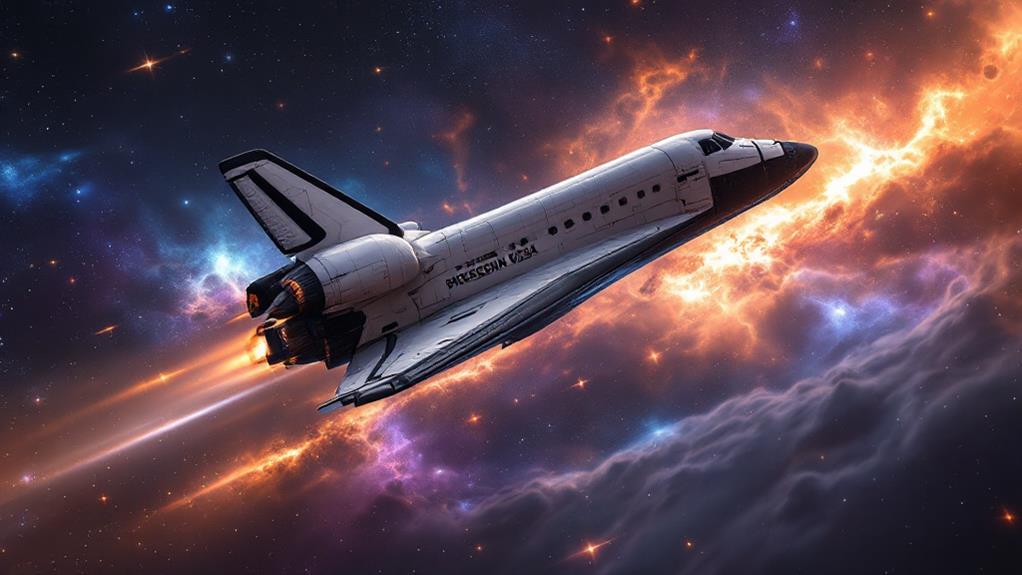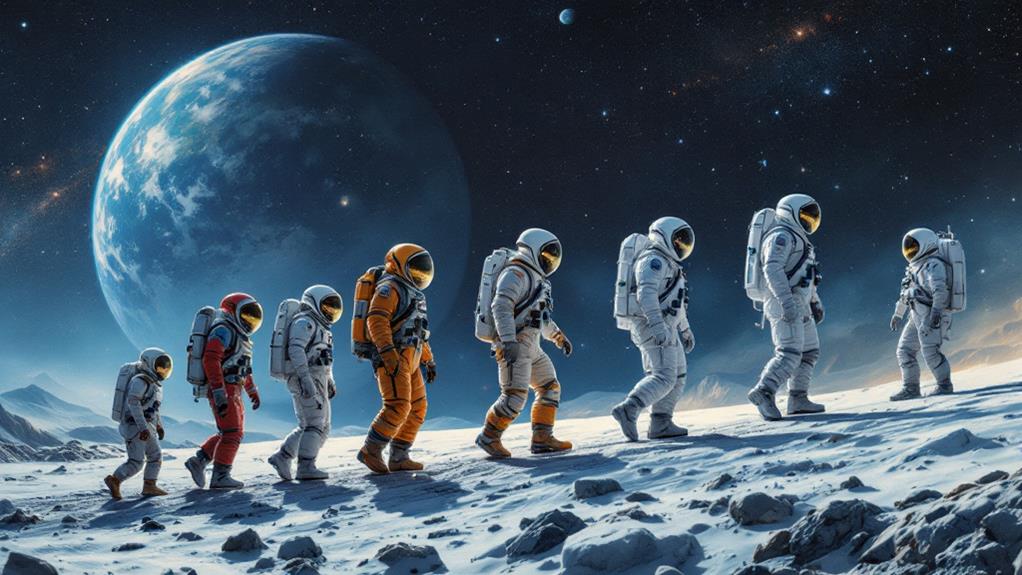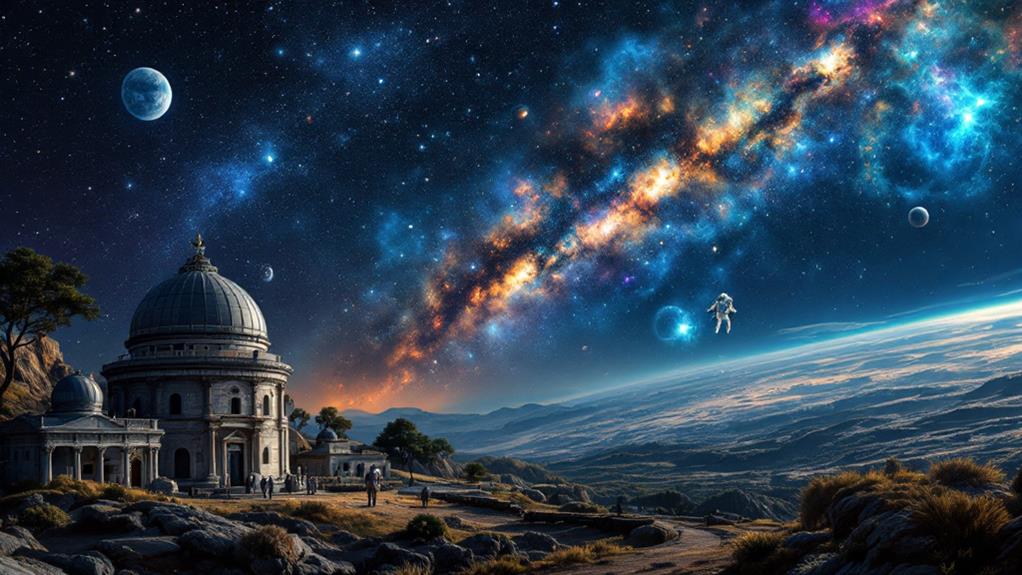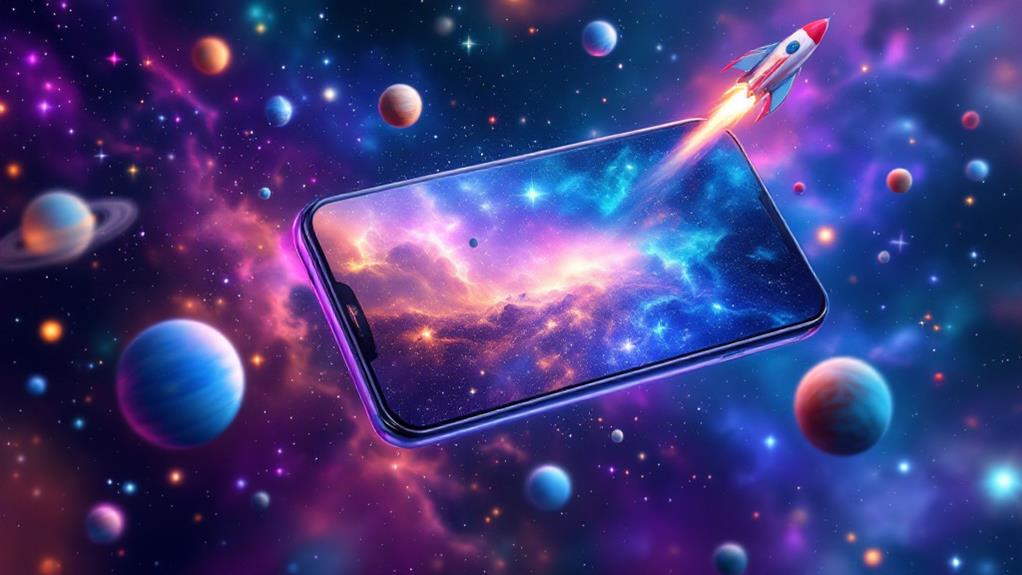Classic Sci-Fi Movies of the 1950s: A Golden Age of Space Adventure
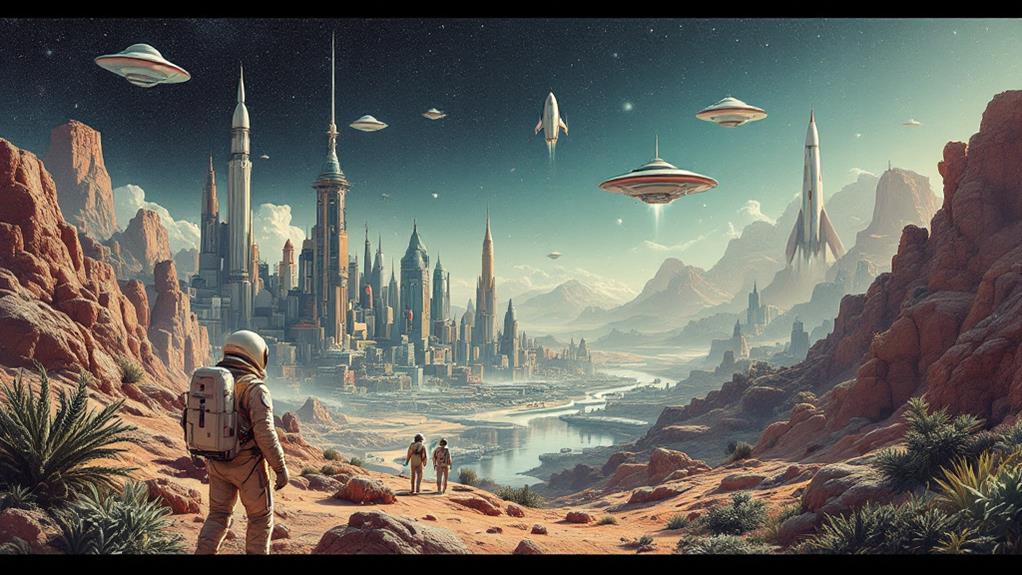
Step into the world of 1950s sci-fi, a golden period of thrilling space adventures and groundbreaking storytelling. During this time, films like "The Day the Earth Stood Still" and "Forbidden Planet" captured imaginations with their inventive special effects and compelling narratives. Directors like George Pal and Robert Wise pushed cinematic boundaries, merging stop-motion animation and atmospheric sound design to mirror Cold War anxieties. These iconic movies didn't just entertain; they examined deep societal fears and technological wonders. As you delve further, you'll uncover how this remarkable decade set the stage for today's sci-fi masterpieces and continues to inspire filmmakers.
The Rise of Sci-Fi Cinema
The 1950s marked a significant shift in cinema as sci-fi films captivated audiences like never before. During this period, you witnessed the genre's evolution, with filmmakers exploring space exploration and alien encounters. These films provided a glimpse into futuristic societies and dystopian futures, tapping into the decade's fascination with technology and the unknown. You couldn't help but be drawn to the imaginative worlds and the thrilling possibilities they presented.
Cinematic techniques advanced, allowing directors to create more convincing special effects, which in turn, heightened your experience as a viewer. The audience reception was overwhelmingly positive, as people enthusiastically flocked to theaters to see these groundbreaking films. You might have noticed that these movies also served as cultural reflections of the time, often mirroring societal anxieties about the Cold War and the rapid pace of scientific progress.
The rise of sci-fi cinema in the 1950s laid the groundwork for the genre's future. You saw how these films pushed boundaries and expanded the scope of storytelling, setting the stage for future innovations. This decade's impact on sci-fi cinema remains evident, as it continues to inspire filmmakers and captivate audiences worldwide.
Iconic Films and Their Impact
As sci-fi cinema soared in the 1950s, several films emerged that left an indelible mark on both audiences and the genre itself. These iconic films not only captured the imagination with thrilling alien encounters and daring space exploration but also explored deeper themes like moral dilemmas and futuristic societies. You couldn't ignore how these movies used groundbreaking cinematic techniques to bring otherworldly experiences to life, creating visual spectacles that still resonate today.
Take "The Day the Earth Stood Still," for example. It offered powerful social commentary on the Cold War period, using the alien visitor to challenge humanity's destructive tendencies. The audience reception was overwhelmingly positive, making it a cult classic that continues to influence sci-fi storytelling. Likewise, "Forbidden Planet" introduced viewers to a distant world where advanced technology and moral dilemmas collided, setting a new standard for sci-fi narratives.
These films didn't just entertain; they provoked thought and discussion. Whether it was pondering the ethics of artificial intelligence or the consequences of unchecked technological progress, these sci-fi masterpieces encouraged you to reflect on your own world. Their impact endures, reminding you why the 1950s are considered a golden time of sci-fi cinema.
Technological Innovations in Filmmaking
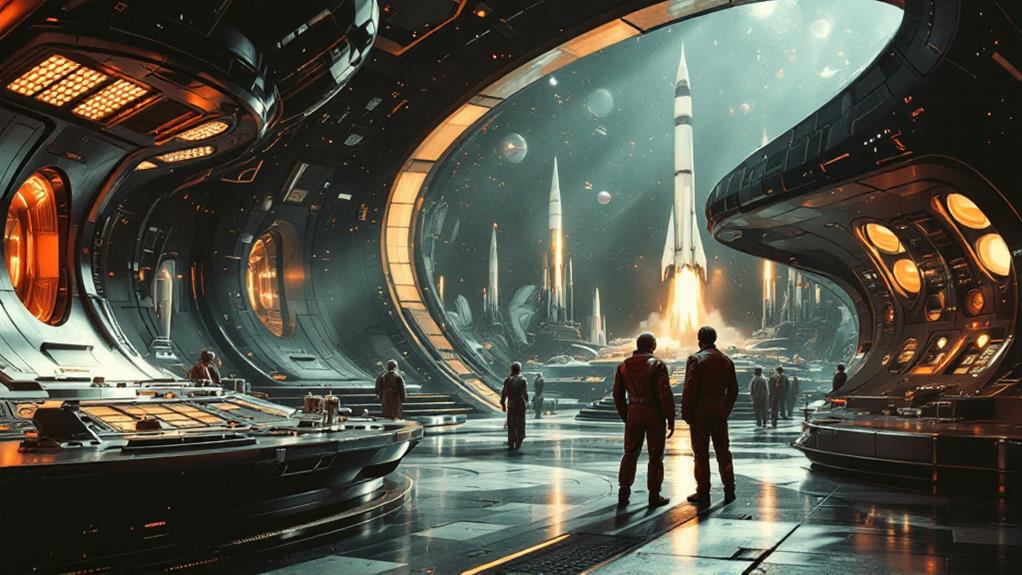
During the 1950s, sci-fi filmmakers welcomed technological innovations, transforming the way stories were told on screen. You could see a shift in the way special effects became an integral part of creating believable otherworldly experiences. Filmmakers experimented with techniques like stop-motion animation, rear projection, and miniatures to bring alien creatures and futuristic landscapes to life. These innovations allowed audiences to engage themselves in imaginative settings, making the impossible seem possible.
Sound design also played a vital role in elevating the sci-fi genre. You'd notice how inventive sound engineers creatively used electronic instruments and modified recordings to produce eerie, otherworldly sounds. This helped set the mood and tone, effectively transporting you to distant planets or tense encounters with extraterrestrial beings. The combination of visual effects and advanced sound design was groundbreaking, offering a sensory experience that kept audiences on the edge of their seats.
As a viewer, you couldn't help but be captivated by these technological advancements. They not only improved the storytelling but also paved the way for future innovations in cinema. The 1950s were indeed a golden period where sci-fi films pushed the boundaries of imagination and technology.
Themes of Cold War Anxiety
A palpable tension infused the 1950s, and sci-fi films adeptly mirrored this pervasive Cold War anxiety. As you watched these films, you sensed a chilling reflection of society's deepest fears. Alien invasion narratives tapped into the age's nuclear paranoia, suggesting that threats could come from both earthly and extraterrestrial sources. Space exploration served as both a lighthouse of hope and a harbinger of fear, as unknown cosmic frontiers mirrored the uncertain future on Earth.
You couldn't escape the fear of technology, as machines and scientific advancements sometimes portrayed as uncontrollable, leading to dystopian futures where human survival hung by a thread. Films often questioned the integrity of governments, subtly weaving themes of government distrust into their plots, reflecting real-world skepticism. Sci-fi became a canvas for exploring what-ifs, challenging viewers to reflect on how they'd react under similar threats.
These movies weren't just entertainment; they were a societal reflection of the Cold War's pervasive unease. By confronting these anxieties, filmmakers offered a lens into the age's psyche, urging audiences to ponder the balance between technological progress and the potential for self-destruction. The tension was real, and the questions they raised are timeless.
Notable Directors and Their Vision
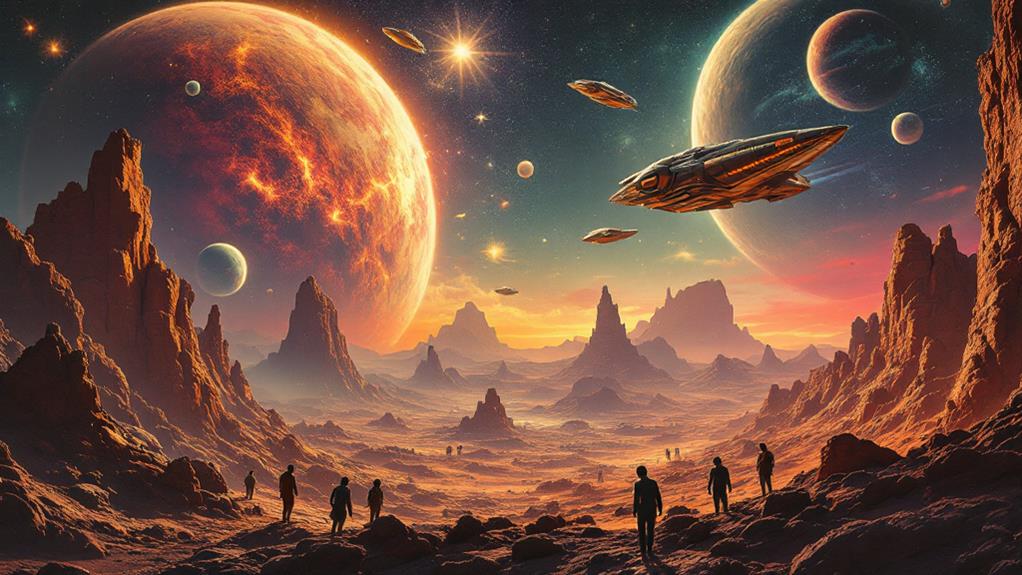
Crafting visions of the future, notable directors of the 1950s infused their sci-fi films with distinct perspectives that shaped the genre. These filmmakers introduced groundbreaking director styles and cinematic techniques, leaving an indelible mark on the landscape of science fiction. You'll find that each director had a unique vision, setting them apart from their peers.
- George Pal: Known for his imaginative storytelling, Pal used stop-motion animation to bring epic tales like *The War of the Worlds* to life. His ability to blend practical effects with enthralling narratives set a new standard for sci-fi.
- Robert Wise: With a knack for suspense and mood, Wise directed *The Day the Earth Stood Still*. His use of atmospheric tension and thoughtful pacing highlighted the film's themes of peace and understanding.
- Jack Arnold: Famous for *Creature from the Black Lagoon*, Arnold's style focused on combining suspense with groundbreaking underwater cinematography, creating unforgettable monster moments.
- Ishirō Honda: The mastermind behind *Godzilla*, Honda emphasized societal fears through allegorical storytelling, using pioneering special effects to portray monstrous threats.
These directors, through their visionary styles and inventive cinematic techniques, crafted narratives that captured the imaginations of audiences and expanded the possibilities of the sci-fi genre.
Legacy and Influence on Modern Sci-Fi
The ripple effect of 1950s sci-fi films is evident in the current cinematic landscape, where their legacy continues to inspire and shape modern storytelling. You're witnessing how these classics laid the groundwork for genre evolution, pushing boundaries and challenging norms. Directors today draw from the groundbreaking special effects and imaginative worlds initially seen in films like "The Day the Earth Stood Still" and "Invasion of the Body Snatchers." These movies introduced audiences to ideas that were as much about the human condition as they were about alien invasions or futuristic societies.
Modern sci-fi films often carry a layer of cultural commentary, a tradition that began back in the 1950s. Those early films used fantastical elements to reflect societal anxieties—like the fear of nuclear war or the unknown. Today, you see this mirrored in films that tackle themes like artificial intelligence and climate change, using sci-fi as a vehicle to investigate real-world issues. This enduring influence shows how 1950s sci-fi didn't just entertain; it opened a dialogue between filmmakers and audiences, encouraging them to think critically about the world around them and what the future might hold.
Timeless Appeal of 1950s Sci-Fi
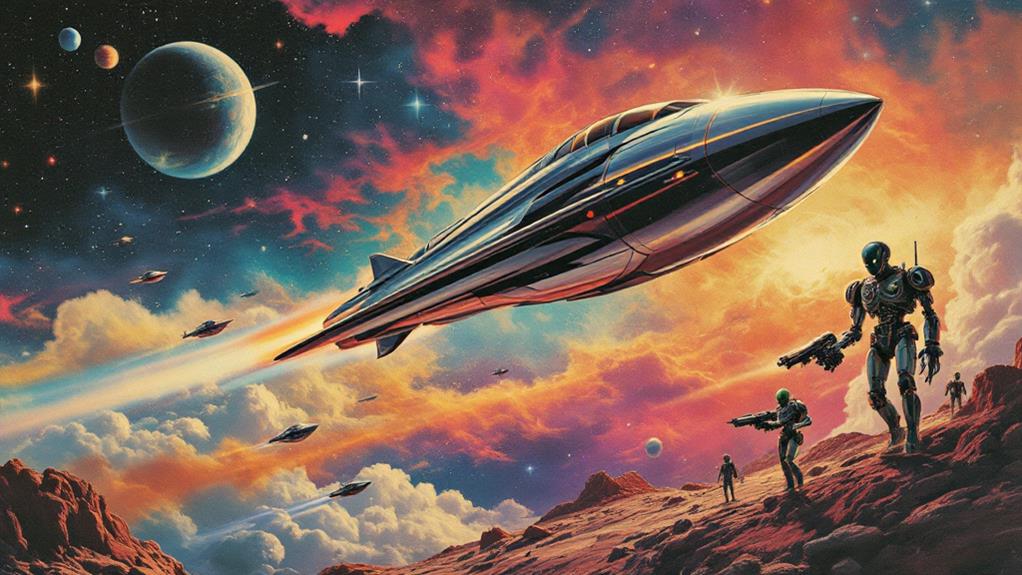
Nostalgia often draws audiences back to the 1950s sci-fi films, but it's their timeless appeal that keeps them relevant. These movies do more than just entertain; they reflect the cultural reflections and societal fears of their period, offering insights into a world on the brink of the space epoch. You see a time when humanity grappled with rapid technological change and global tensions. Despite the decades, these films continue to resonate, showcasing universal themes that still captivate today's audiences.
Consider the factors that contribute to their enduring charm:
- Cultural Reflections: These films mirror the post-war optimism and anxiety, capturing a crucial moment in history.
- Societal Fears: Alien invasions and nuclear threats symbolize the period's deep-seated concerns about the unknown.
- Innovative Effects: Groundbreaking special effects captivated viewers, laying the groundwork for modern cinema's visual storytelling.
- Compelling Storylines: At their core, these films told stories of human resilience, curiosity, and the quest for knowledge.
